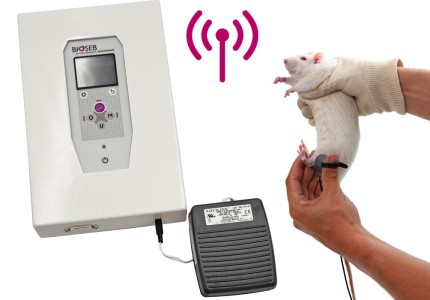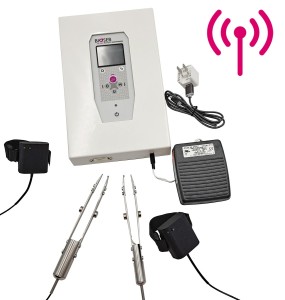Authors
J.-S. Kim, J. Kroin, X. Li, H. An, A. Buvanendran et al.
Lab
Rush University Medical Center, Department of Biochemistry, Chicago, USA.
Journal
Arthritis Research and Therapy
Abstract
INTRODUCTION: Degeneration of the interverterbral disk is as a cause of low-back pain is increasing. To gain insight into relationships between biological processes, structural alterations and behavioral pain, we created an animal model in rats. METHODS: Disk degeneration was induced by removal of the nucleus pulposus (NP) from the lumbar disks (L4/L5 and L5/L6) of Sprague Dawley rats using a 0.5-mm-diameter microsurgical drill. The degree of primary hyperalgesia was assessed by using an algometer to measure pain upon external pressure on injured lumbar disks. Biochemical and histological assessments and radiographs of injured disks were used for evaluation. We investigated therapeutic modulation of chronic pain by administering pharmaceutical drugs in this animal model. RESULTS: After removal of the NP, pressure hyperalgesia developed over the lower back. Nine weeks after surgery we observed damaged or degenerated disks with proteoglycan loss and narrowing of disk height. These biological and structural changes in disks were closely related to the sustained pain hyperalgesia. A high dose of morphine (6.7 mg/kg) resulted in effective pain relief. However, high doses of pregabalin (20 mg/kg), a drug that has been used for treatment of chronic neuropathic pain, as well as the anti-inflammatory drugs celecoxib (50 mg/kg; a selective inhibitor of cyclooxygenase 2 (COX-2)) and ketorolac (20 mg/kg; an inhibitor of COX-1 and COX-2), did not have significant antihyperalgesic effects in our disk injury animal model. CONCLUSIONS: Although similarities in gene expression profiles suggest potential overlap in chronic pain pathways linked to disk injury or neuropathy, drug-testing results suggest that pain pathways linked to these two chronic pain conditions are mechanistically distinct. Our findings provide a foundation for future research on new therapeutic interventions that can lead to improvements in the treatment of patients with back pain due to disk degeneration.
BIOSEB Instruments Used
SMALGO: SMall animal ALGOmeter (BIO-SMALGO),Rodent pincher - analgesia meter (BIO-RP-M)
Source :

 Pain - Thermal Allodynia / Hyperalgesia
Pain - Thermal Allodynia / Hyperalgesia Pain - Spontaneous Pain - Postural Deficit
Pain - Spontaneous Pain - Postural Deficit Pain - Mechanical Allodynia / Hyperalgesia
Pain - Mechanical Allodynia / Hyperalgesia Learning/Memory - Attention - Addiction
Learning/Memory - Attention - Addiction Physiology & Respiratory Research
Physiology & Respiratory Research











![Dynamic Weight Bearing 2.0 – Postural Module [Add-on]](https://bioseb.com/733-home_default/dynamic-weight-bearing-20-add-on-postural-module.jpg)
























 Pain
Pain Central Nervous System (CNS)
Central Nervous System (CNS) Neurodegeneration
Neurodegeneration Sensory system
Sensory system Motor control
Motor control Mood Disorders
Mood Disorders Other disorders
Other disorders Muscular system
Muscular system Joints
Joints Metabolism
Metabolism Cross-disciplinary subjects
Cross-disciplinary subjects CONFERENCES & MEETINGS
CONFERENCES & MEETINGS 
